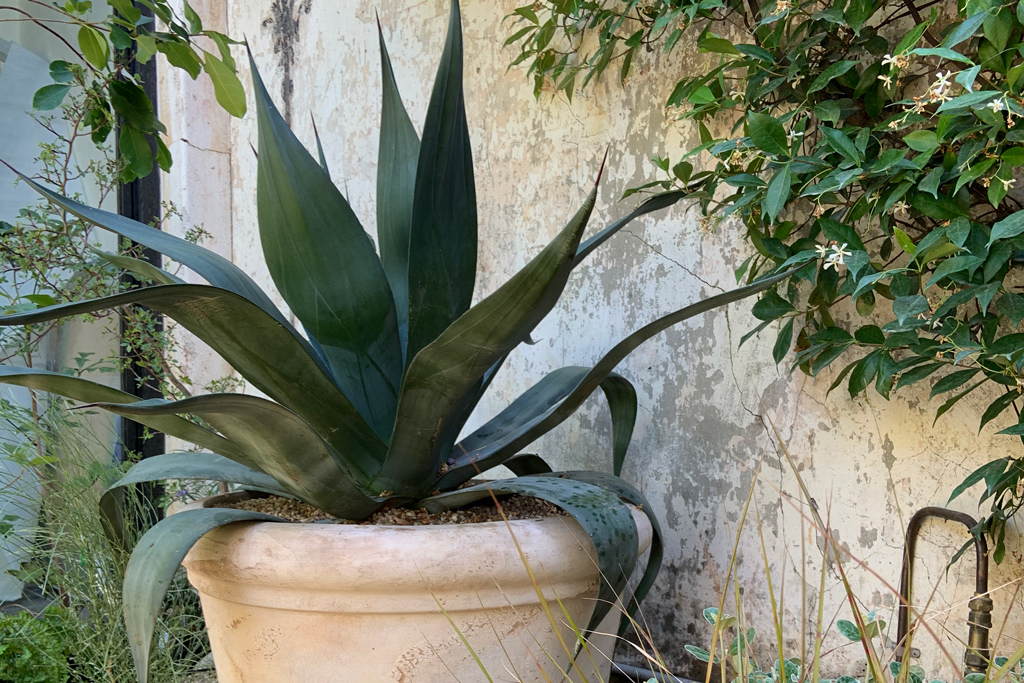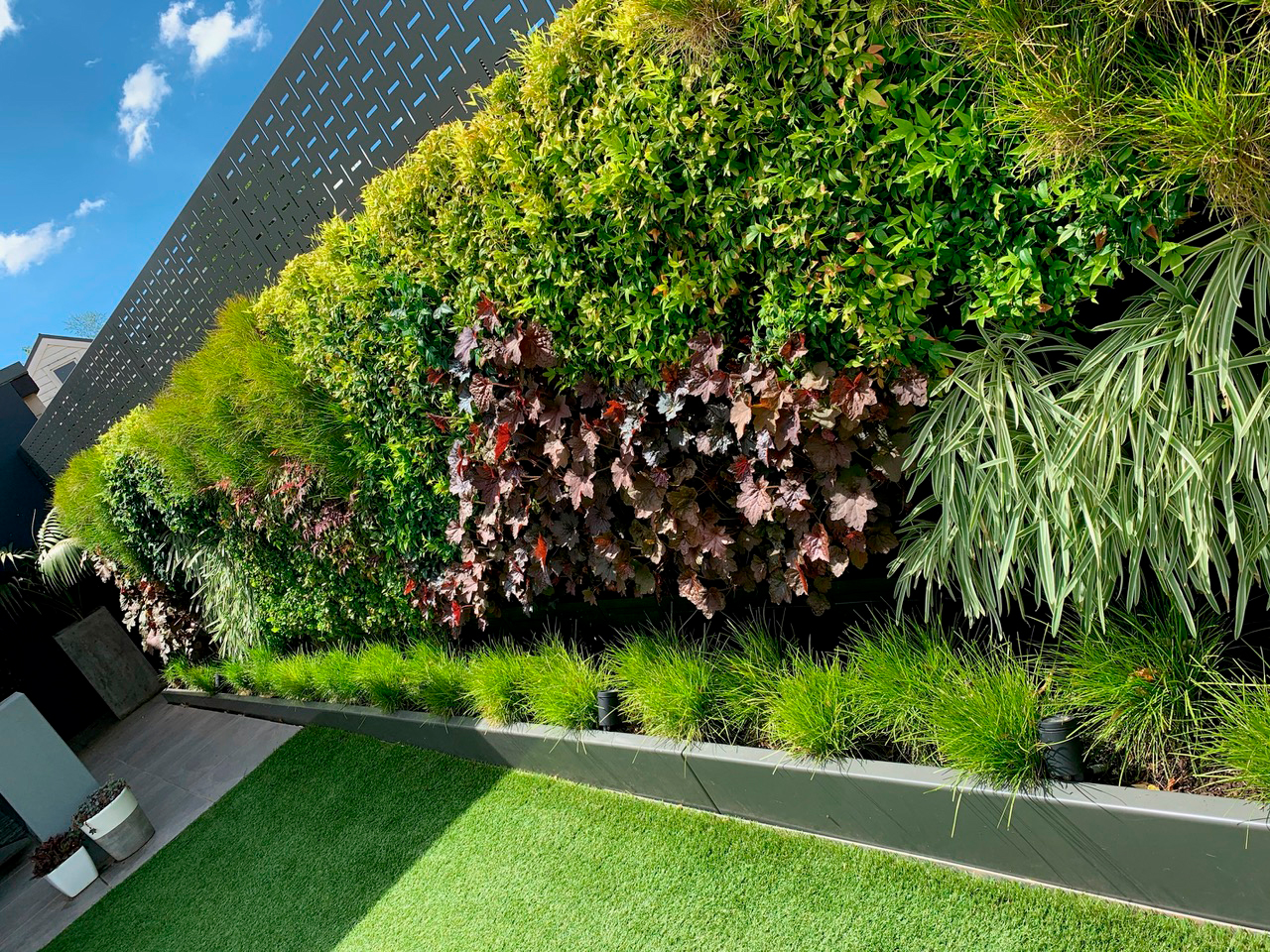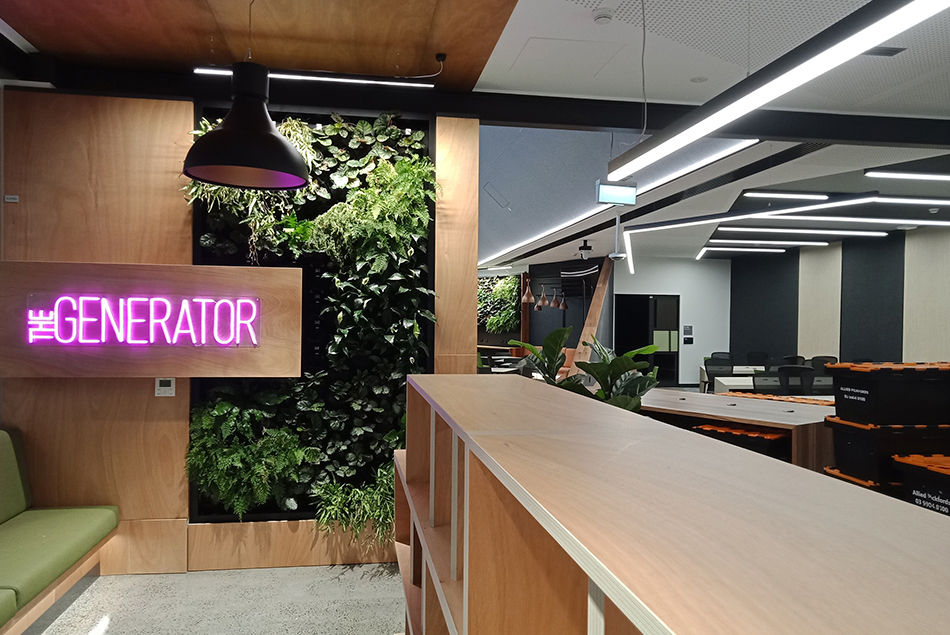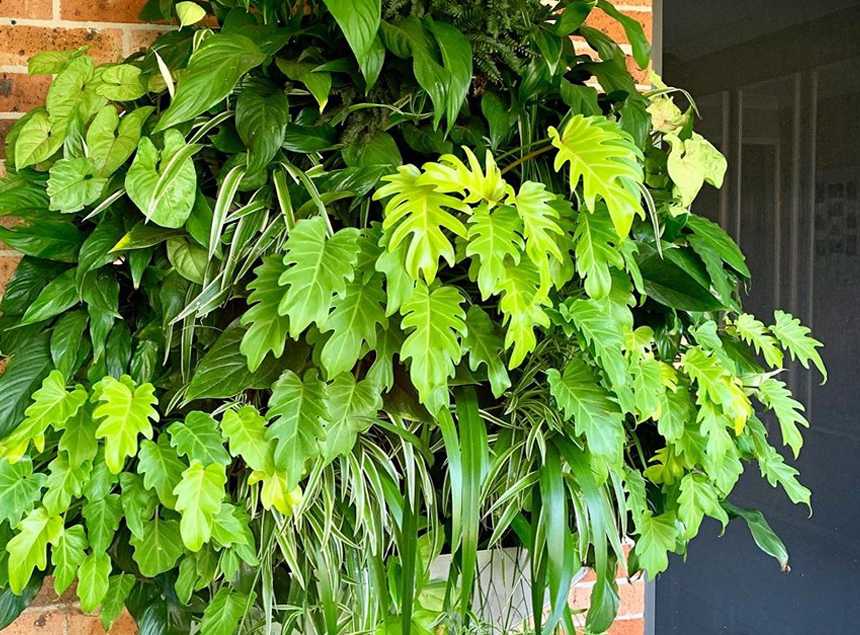
Addicted to Gardens takes pride in working with high end architects, landscapers and plant hire companies within Sydney and surrounding areas.
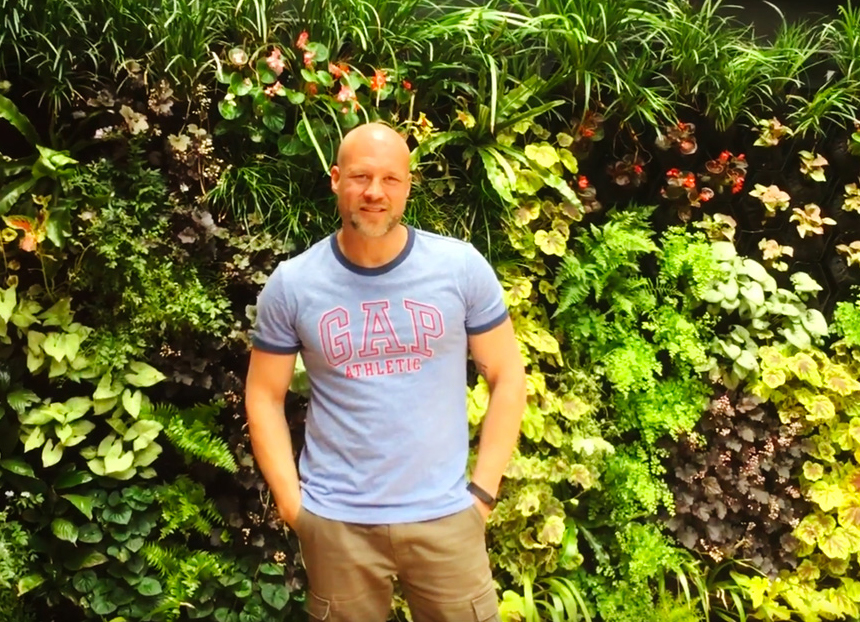
Matthew Pittard (Addicted to Gardens)
What sparked your career in landscape design?
A passion for ecological conservation led me into the landscaping profession. I’ve always felt a keen connection to the natural environment; landscape design was a way to blend this with my drive for creativity.
When and why did you first offer greenwalls to your customers?
Offering Vicinity Greenwall to my clients was a no-brainer. I researched literally every vertical garden system on the market and was disappointed with what I found. But when I discovered Vicinity Greenwall I became very excited by its capabilities and how easy it is to use.
What advice would you give to someone thinking about a greenwall?
You want to carefully consider which system you buy and what maintenance it will need. I've gone exclusively with Vicinity is because it's just so basic to look after. Being able to take each individual pot on and off the wall brings so many advantages – you can easily:
- tend to an individual plant without impacting surrounding plants
- rearrange how all or some of the plants sit, giving massive flexibility with the design of your vertical garden
- avoid the costs associated with plant death/replacement.
This kind of flexibility is something you don't get with any other system. Most have plants potted together in a cube pot or they're planted directly into the wall. In these scenarios once they're planted and start to deteriorate, you’ve got a problem.
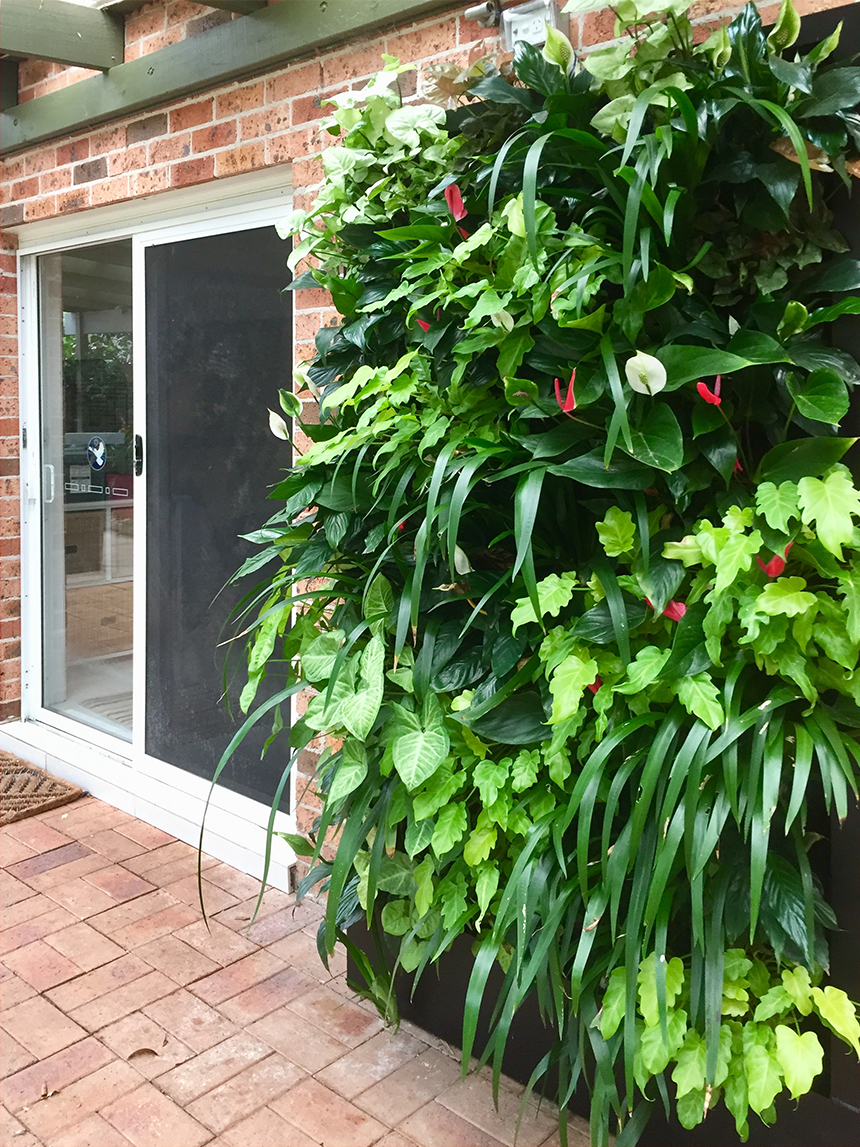
Are greenwalls a good option for people who don't think they have a green thumb?
Without a doubt. With Vicinity, you just clip off each pot to replenish soil or fertiliser every so often. It's very quick and easy to do. Because the system retains all the water, nutrients remain circulating through the plants a lot longer than they would for plants in the ground. I have run Vicinity walls for three years now and I’m still not thinking about fertilising them!
Another plus is the controlled nature of how the irrigation and fertiliser is distributed throughout the entire wall – it's a very even spread which promotes consistent growth for all the plants. This is much harder to achieve in ground-based garden beds.
It's important to understand the different maintenance needs of a greenwall – if you fertilise it at the same rate as a garden bed, you'll have more prolific growth and will need to trim your greenwall plants more often. Really, we’re talking about the ultimate low-maintenance greenwall system here. It allows you to keep growth contained.
What do you see as some of the advantages of living greenwalls?
I really love the fact you can change up the design of your wall, just by rearranging the plants you've already got. Most people keep their greenwall the same to enjoy watching the plants flourish and intertwine over time, as well as flower over the seasons. It really does become its own living mass. But with a quick trim of any overgrowth, you can easily unclip the pots and experiment with a new design. I have unclipped all 220 pots off one of my greenwalls, thought about how I want to rearrange them, and clipped them all back on – within 30 minutes!
Living green walls are beautiful, but are they practical for the average homeowner?
Because it's flexible, you can adapt the Vicinity Greenwall height to match your space by simply trimming the rails. The step-by-step installation instructions are so easy to follow, the rails and base come with pre-drilled holes, master tank, secondary tanks; it's fairly foolproof to assemble without the headaches.
If you move house, the Vicinity Greenwall can effortlessly go with you. Unclipping the pots and disassembling the system takes very little time, and it's basic to reassemble at the other end. I'm talking easier than any piece of IKEA furniture.
In terms of plants, you don't want to create a greenwall using desert species alongside plants that need daily watering – this sets up an unnecessary maintenance challenge.
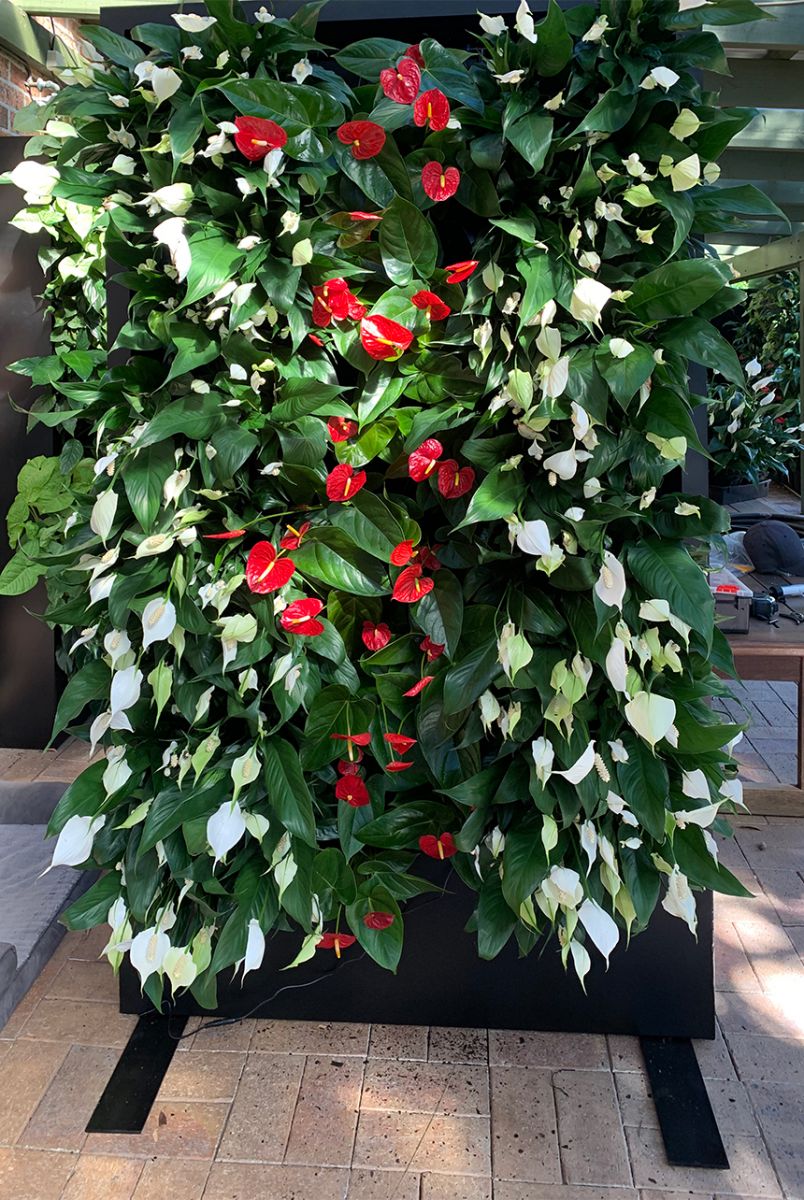
There are many ways to design a vertical garden – how do you approach greenwall design?
I try to stick to a maximum of five different plant varieties. It's visually pleasing to clump different plants together. As with a ground-level garden bed, mass planting a couple of different species has an impressive impact. A good approach is to choose the plants you’re drawn to, pick up a few of them in the nursery, line them all up on the ground and see if you like the effect. Seeing them all bunched together will give you a very close impression of what the end result will be on your greenwall. This way you can assess whether you like the look of these plants together, and change them up until your happy – all before buying a single plant.
I like to mix a few patches of colour through my greenwalls, as well as various leaf textures and structures. For example, a strappy leaf like walking iris contrasted with the elephant-eared Gold Bullion Xanadu is very appealing.
What types of plants thrive in living wall systems?
For the home gardener it's best to go with filling your greenwall with species of plants that like similar conditions (although the system is more flexible and forgiving than you would think!)
I have a two-year-old greenwall located under a west-facing pergola. By late afternoon, the hottest of the day’s sun creeps below the pergola and beats against the greenwall which is planted with peace lilies, anthurium, walking iris and Xanadu. Despite the strong sun exposure they are all flowering and growing beautifully. Because the plants always have moisture at their roots, they're not getting dried out. It's amazing what it can withstand.
What qualities do you appreciate about the Vicinity Greenwall system?
I’ve made a point of testing one of my greenwalls – I haven’t touched it for three years while closely monitoring its performance. It's the 'test case' that makes me so confident in offering Vicinity Greenwall to my clients. I show them photos of this test wall and they're impressed with how lush and healthy it is with zero maintenance (other than infrequent clipping off old leaves and flowers). It's got its own float, so getting the water it needs. Watering comes on for 30 minutes every day, 365 days a year. It’s hard to beat this result for such little maintenance.
Can you tell us about one of your greenwall projects?
We installed a greenwall last year which is exposed to direct northern sun. It faces a building, so the bottom plants get virtually no light (in deep shade) while the top plants receive too much light. I've planted all the same plants throughout the wall as the client wanted a particular look. As we approached the one-year maintenance visit, I was a little concerned about how these plants would be going. I was pleasantly surprised to see a vibrant, thriving wall – all the plants were doing equally well. All that was needed was trimming a few leaves, checking all the drippers were working perfectly and the water was flowing through. This was an impressive result, particularly as we had just experienced a tough summer with multiple days of 45°C+ and heavy air pollution from bushfires.
The key to this remarkable success was how we potted up the plants. You need to do this correctly to ensure there's effective wicking action throughout the soil. I deliberately put 'too much' soil in the pots when planting; this adds to the greenwall's longevity by guiding water to move right throughout the pot. If you can distribute water evenly and thoroughly through the pot, you'll have a winning vertical garden.

